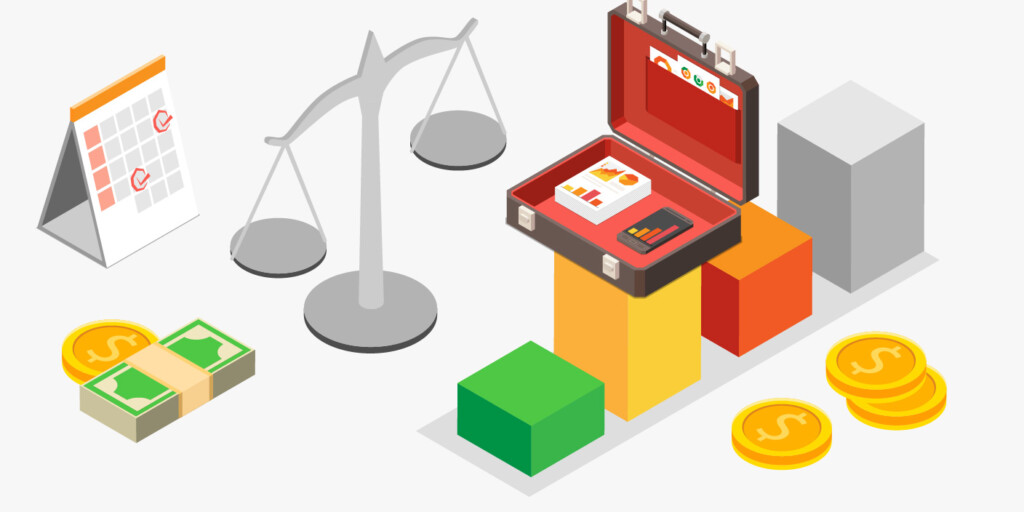

Portfolio diversification is a vital part of successful investments. However, it may not be effortless, especially for newbies, as they usually focus on a single asset and don’t have the deep knowledge to put funds in different financial instruments. Read on to learn how to implement diversification if you are a beginner investor or if you want to increase the efficiency of your diversification approach.
1. Learn the investment opportunities
Before you decide how to diversify, you need to know the unique features of investment instruments. It’s a well-known fact that stocks are risky assets. Therefore, those who want significant income choose the stock market as their primary investment. However, the oil and cryptocurrency markets are also risky. So, it may be more effective to consider investing in crypto rather than buying shares.
2. Determine your goals

It’s vital to know your final goal to determine a diversification strategy. There is a wide range of investment opportunities, including stocks, bonds, commodities, and real estate. Each of them suits a specific investor type and investor goals. If you plan to save money for retirement, you may consider reliable bonds and invest only a small sum in the stock market as it bears significant risks. However, suppose you plan to save for a big purchase. In that case, bonds won’t hedge risks but will disturb you from achieving your goal quickly, as bonds bring rewards in the long run.
3. Have a plan
Before investing and diversifying your portfolio, you need to develop a plan with your primary and short-term goals. If you have a few main goals, you should create several portfolios. You won’t be able to balance your portfolio if you don’t know where you are going.

4. Spread it wide

According to an American financial historian, economist, and educator Peter Bernstein, “A few holdings with radically different types of market behavior will do more to smooth out the pattern of portfolio returns than 50 or 100 holdings that move up and down together.”
If you follow the first tip and gain knowledge on various asset classes, you will quickly determine those with a negative correlation and can balance your portfolio. Some people invest in the stock and the real estate markets and don’t understand why they fail. It’s vital to choose assets that react differently to particular market conditions. For instance, the stock market usually goes down when gold prices rise.
5. Think about subcategories
It’s not enough to diversify only between different asset classes. Every class includes subcategories. For instance, if you invest in bonds, you may choose between corporate bonds, government bonds, short-term treasury bills, etc. Real estate investments can be made in residential and commercial property or land. Subcategories also differ in the level of risk, availability, and investment period.
6. Know the limits
It may seem that successful diversification is when you choose as many assets as you can afford. However, the main idea of any successful investment is to select assets wisely. You may invest in 20 assets, but your portfolio won’t grow as they don’t balance risks. There is no specific number of assets you should invest in. Still, it’s recommended to stick to up to 10 assets.
An American investor, hedge fund manager, and author, Seth Andrew Klarman, once stated: “Rather than own a little bit of everything, we have always tended to place our eggs in a few dozen baskets and watch them closely.”
7. Rebalance your portfolio

After you plan, it will be easy to rebalance your portfolio. The current portfolio should reflect your goals, period, and capacity to take risks. Monitor it over time and rebalance as soon as one of the goals is achieved.
It’s worth placing a deadline for particular goals. The portfolio can be rebalanced if you don’t reach your targets within a predetermined period. Remember that deadlines should be set according to the analysis, not your wishes. Research the average time it may take to gain rewards from particular asset classes and base your plan on this knowledge.
Final thoughts
Diversification isn’t complicated if you have deep knowledge about financial instruments, stick to a plan, and work on your portfolio. It’s vital to understand that although diversification aims to help reduce risks, it doesn’t entirely remove them. It’s only an instrument to make losses smaller in case they occur. Be ready to spend time learning and practicing.
Sources:
5 Tips for Diversifying Your Portfolio, Investopedia
Beginner’s Guide: 12 Tips For Diversifying Your Investments, Forbes






